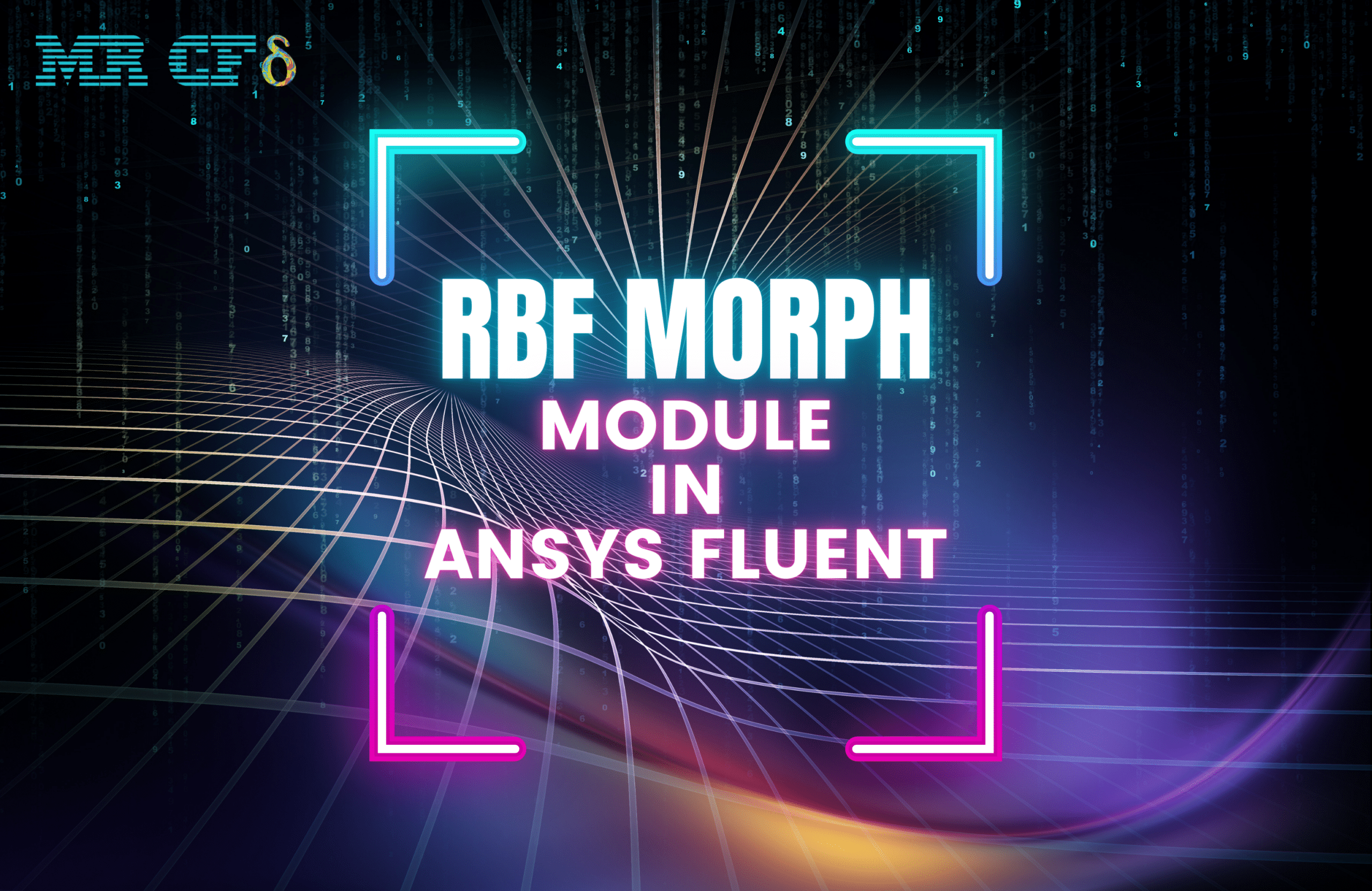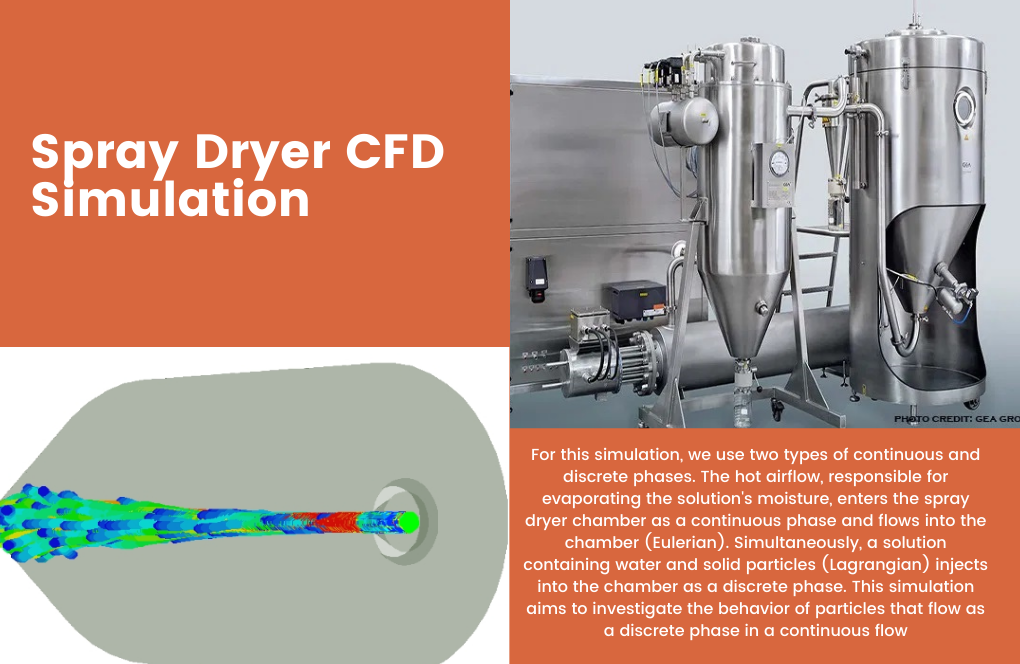RBF Morph (Mesh Morphing) Concepts in ANSYS Fluent
$20.00 $10.00 Student Discount
- Introduction of different mesh morphing methods
- Introduction and overview of the design tab of ANSYS Fluent software
- Post-processing of adjoint solution, specifically sensitivity analysis
To Order Your Project or benefit from a CFD consultation, contact our experts via email (info@mr-cfd.com), online support tab, or WhatsApp at +44 7443 197273.
There are some Free Products to check our service quality.
If you want the training video in another language instead of English, ask it via info@mr-cfd.com after you buy the product.
Description
In this lesson, you will learn the design tab environment in Ansys Fluent software. You will be familiarized with the ration behind every option inside Fluent environment. There are many steps related to the design optimization process in the software. You will learn all the steps in detail. This section contains the following subsections:
- Introduction and overview of the design tab of Fluent software
- Gradient-based section
- All different types of observable and operation
- Design tool
- Morphing methods
- Target changes in the objective tab
- Design conditions and all types of the constraints
- Gradient-based optimizer
- Post-processing of adjoint solution, specifically sensitivity analysis
This CFD Project is the 2nd episode of the RBF Morph (Mesh Morphing) Training Course.





Sarina Kub –
The lesson was detailed and very informative, truly exceptional for understanding mesh morphing and design optimization in ANSYS Fluent.
MR CFD Support –
Thank you for your positive feedback! We are thrilled to hear that you found the lesson valuable and detailed. If you have any more questions or need further assistance with the software, feel free to reach out.
Liam Flatley –
The RBF Morph training was very insightful! I grasped a clear understanding of the design optimization process in Fluent and have an appreciation for the depth covered in mesh morphing methods
MR CFD Support –
Thank you for your kind words! We’re delighted to hear that you found the RBF Morph training course insightful and that it gave you a clear understanding of the design optimization process in ANSYS Fluent. If you ever have more questions or need further assistance, feel free to reach out!
Robbie Carroll –
The explanations on gradient-based optimization were very insightful. I didn’t encounter any difficulties implementing the design tool thanks to the clear instructions.
MR CFD Support –
Thank you for your positive feedback! We’re really glad that the instructions on gradient-based optimization were helpful to you. It is rewarding to know that our tutorial facilitated a smooth learning experience. Should you have any further questions or need assistance with advanced features, please don’t hesitate to reach out.
Afton White IV –
I was really impressed with how comprehensive the RBF Morph training is with ANSYS Fluent. The structured approach through the design optimization process cleared up a lot of questions I had.
MR CFD Support –
Thank you for your positive feedback! We’re delighted to know that the RBF Morph training met your expectations and provided clarity on the design optimization process in ANSYS Fluent. If you have further questions or need more assistance, feel free to reach out!
Muriel Effertz –
This lesson has excellently detailed the process and use of RBF Morph. After going through the material, I feel confident in the design optimization process within Ansys Fluent. Thank you for breaking down the steps so well!
MR CFD Support –
Thank you for your positive feedback. We are delighted to hear that our lesson has effectively conveyed the intricacies of mesh morphing using RBF Morph in ANSYS Fluent. Your confidence in applying these optimization techniques is precisely the outcome we aim for. Should you have any further inquiries or require support in your projects, please feel free to reach out.
Icie Kreiger –
This lesson seems very comprehensive! Does it also include practical examples where I can apply these mesh morphing concepts?
MR CFD Support –
Yes, the RBF Morph (Mesh Morphing) Concepts lesson includes practical, real-world examples where you can apply the mesh morphing concepts learned throughout the tutorial, providing a hands-on understanding of how to utilize these tools in design optimization.
Miss Lou Streich –
The content is really thorough and informative. I was impressed with the detailed exploration of RBF Morph concepts and the step-by-step approach to design optimization within ANSYS Fluent.
MR CFD Support –
Thank you for the positive feedback! We’re glad to hear that the RBF Morph training course was informative and helpful to you. We always strive to provide detailed and practical guidance in our lessons.
Mr. Ismael Lemke PhD –
I’ve completed the RBF Morph (Mesh Morphing) Concepts in ANSYS Fluent course and found the breakdown of the design tab extremely insightful, particularly the explanation on the gradient-based optimizer. Great module for anyone getting started with design optimization in CFD analysis!
MR CFD Support –
Thank you for your positive feedback! We’re thrilled to hear that the RBF Morph course was helpful in your understanding of design optimization within ANSYS Fluent. Feel free to reach out if you need further assistance with your CFD learning journey!
Favian Hessel –
I’ve found the lesson quite enriching. It gave me a solid understanding of the mesh morphing technique within ANSYS Fluent. The breakdown of the design optimization process and the comprehensive coverage of design conditions and constraints were helpful.
MR CFD Support –
Thank you for sharing your positive experience. We are thrilled to hear that you found the lesson enriching and that it provided you with a solid understanding of mesh morphing techniques and the design optimization process in ANSYS Fluent.
Mr. Zander Oberbrunner PhD –
I’ve just finished the RBF Morph Concepts lesson from MR CFD and I am impressed with the richness of the content. The details provided on morphing methods, design conditions, and the extensive tutorial on sensitivity analysis are outstanding. The post-processing part of the adjoint solution was particularly well-explained. Thank you for a comprehensive course!
MR CFD Support –
Thank you for your kind words! We’re thrilled to hear that you found the RBF Morph lesson enriching and informative. Our goal is to provide in-depth knowledge to help our customers get the most of our learning products. Your feedback motivates us to keep improving our course content. If you need further assistance or have more questions, feel free to ask!
Melyssa Harris –
Great tutorial on RBF Morph! The comprehensive breakdown of using the design tab in ANSYS Fluent provided solid understanding on mesh morphing concepts. Particularly appreciated the details on gradient-based optimization and sensitivity analysis in post-processing. Well structured and educational!
MR CFD Support –
We’re thrilled to hear that you found the RBF Morph tutorial educational and comprehensive! Thank you for your feedback and we’re delighted that you appreciated the detailed coverage on optimum design iteration and post-processing analysis. We always strive to provide valuable learning experiences to our users.
Joanne Lindgren I –
I finished the RBF Morph course and found the design optimization process clearly explained. Can you tell me more about how the sensitivity analysis is applied in the post-processing?
MR CFD Support –
The sensitivity analysis in the post-processing phase is designed to evaluate how small changes in a model’s design parameters can affect the overall objective function. Ansys Fluent applies the adjoint solver results to calculate the possible impacts of these parameters after simulation. This analysis assists in prioritizing design changes that will most effectively improve the performance according to the defined objectives.
Prof. Trevor Koch PhD –
The content seems comprehensive, but I’m curious—how user-friendly is the design tab for beginners? Does the course provide guidance for users new to mesh morphing?
MR CFD Support –
The design tab in ANSYS Fluent is designed with a user-friendly interface that guides both beginners and experienced users. For novices especially, the course includes detailed tutorials and conceptual explanations that break down each process into manageable steps, ensuring a clear understanding of mesh morphing techniques and their applications within the design optimization processes. Rest assured, guidance is provided throughout the learning material to cater to new users.
Una Franecki –
This CFD Project enriched my understanding of RBF Morph incredibly—I especially appreciated the clear explanations around gradient-based optimization. What would be your recommendation for further learning on applying this to more complex geometries and optimization challenges?
MR CFD Support –
Thank you for your positive feedback! For further learning, we recommend diving into more advanced modules of the Mesh Morphing training course, which will expose you to complex case studies. Additionally, participating in hands-on projects with diverse geometric configurations will help solidify your grasp on optimization techniques within various fields of application.
Mr. Deondre Morissette –
The tutorial by MR CFD appears very thorough and touches on a comprehensive range of features within the software. I especially appreciated insight into gradient-based optimization and the sensitivity analysis post-processing techniques.
MR CFD Support –
Thank you so much for your kind words! We’re delighted to hear that you found our RBF Morph tutorial comprehensive and insightful. Understanding optimization and sensitivity analysis is crucial to mastering CFD projects, and we’re glad we could assist you in this learning journey. We appreciate your feedback, and if there’s anything more we can do to aid your CFD learning experiences, please let us know!
Gladyce Pfeffer –
I’ve completed this course and found the explanations on morphing methods particularly engaging! Is there a possibility of integrating other optimization methods aside from gradient-based in future updates?
MR CFD Support –
Currently, the course focuses on gradient-based optimization due to its efficiency and popularity. However, the admin team continuously evaluates the curriculum and might consider adding new optimization methods based on emerging trends and user feedback. We encourage suggestions and thank you for your interest.
Ashly Bins –
The mesh morphing aspects sound impressive. Do you provide practical examples or case studies within this course to apply the RBF Morph method?
MR CFD Support –
Absolutely, the course includes practical examples and case studies that guide you through the process of applying the RBF Morph method to different simulation scenarios. You’ll get hands-on experience with design optimization and mesh morphing techniques, ensuring that you’re able to apply these skills effectively to your own projects.
Clotilde Carter –
This RBF Morph training sounds incredibly comprehensive. I particularly appreciate the coverage of gradient-based optimization and sensitivity analysis. I previously struggled with mesh morphing, and this guide laid everything out so clearly.
MR CFD Support –
Thank you for your kind words! We’re delighted to hear that the RBF Morph (Mesh Morphing) Training Course has clarified concepts for you and helped with your mesh morphing challenges. We always strive to provide detailed and understandable training materials.